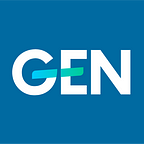Visualising Migrants’ Remittances
In March 2013, GEN organised an Editors Lab in Voralberg, Austria. The competition was hosted by Russmedia Digital, with the support of Google and the Knight Foundation and in partnership with the United Nations Alliance of Civilizations (UNAOC). The theme was ‘Covering International Migrations’.
TagesWoche, a Swiss German-language online newspaper based in Basel presented a interactive visualisation showing the incredible rise of migrants’ remittances. It was the first visualisation ever to show the evolution of migrants’ remittances since 1970. It brilliantly illustrated how after 2000, those remittances rapidly overtook official development aid and how in 2012 the funds were more than three times those provided as foreign aid. This visualisation shed a new light on migration debates that tend to focus mostly on foreign aid spending.
After 7 weeks, 3 publications
Seven weeks after the Editors Lab, TagesWoche published :
- A comprehensive standalone data visualisation showing the incredible rise of migrants’ remittances (in German and English).
- A cover story in the print issue of TagesWoche and four complementary articles online.
- An immersive online story detailing the findings.
A great success for the newsroom
The project was a big hit for their newsroom:
- The story received 10 times more visits than the average for big stories on TagesWoche
- The visualisation was republished by Austria’s leading news site, standard.at
- The project was awarded the Axel Springer Preis 2014 in the Internet category
TagesWoche is a small newsroom and had never published a project on such an ambitious technical scale. They had neither front end designers nor programmers. For the Editors Lab, they invited a freelance designer and a freelance developer to join the TagesWoche journalist. By the end of the hackathon, the team had a working prototype, an near-final design and a clear idea of their next steps. After the Editors Lab, it was mainly a matter of execution and attention to detail. Over the next seven weeks, TagesWoche set up a five people — one project manager, one programmer, one designer, two journalists — to perfect the project. The team worked part-time on the project and invested in total 35 working days divided between the different team members.
Originally published by the Global Editors Network on 25 July 2014.
